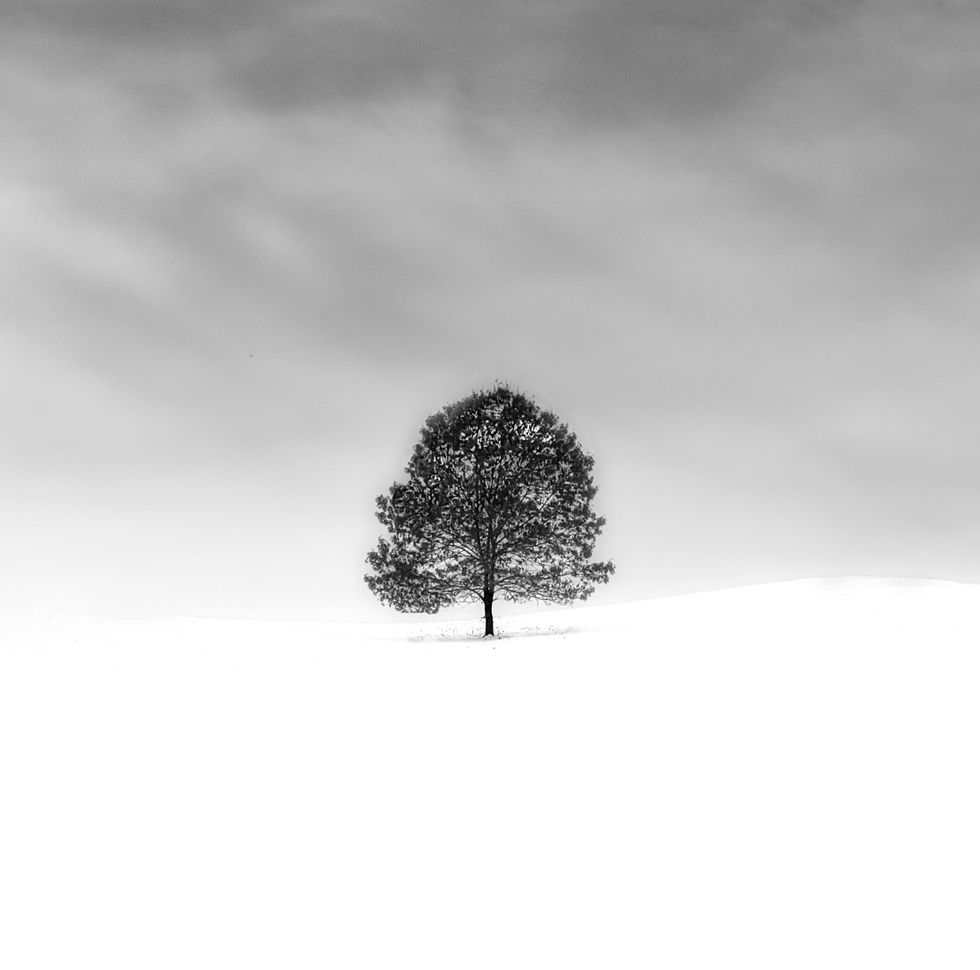Black and White Photography
- The Global Photography Community

- Mar 10
- 5 min read

What’s So Special About Black and White Photography?
You might think black and white photography is just color photography’s less flashy cousin, but it’s way more than that. When you ditch the hues, you’re left with the bones of an image: contrast, shapes, and raw emotion. It’s like turning down the noise to hear the melody. Without color fighting for attention, your eyes lock onto the details—the curve of a tree branch, the grit of a brick wall, or the intensity in someone’s gaze.
It’s also got this timeless vibe. Think about those old-school photos that still hit you in the feels—black and white has a knack for making moments feel eternal. It’s not tied to trends or seasons; it just is. And honestly, there’s something bold about choosing to strip things down in a world obsessed with vibrant filters and saturation.
The Emotional Punch
Here’s the thing: black and white photography isn’t just technical—it’s emotional. Color can dazzle, but it can also distract. When you go monochrome, the mood takes over. A high-contrast shot with deep blacks and stark whites can feel intense, almost cinematic—like a stormy sky about to unleash chaos. On the flip side, a softer image with lots of grays can pull you into a quiet, reflective place, like a foggy morning stroll.
Take portraits, for example. Strip away the rosy cheeks and blue eyes, and suddenly it’s all about the lines on a face or the spark in a look. Or landscapes—without green grass or golden sunsets, you’re drawn to the ruggedness of mountains or the loneliness of a single rock in the frame. It’s storytelling with less, and somehow that makes it hit harder.
Getting Technical: How to Make It Work
Shooting great black and white photos isn’t about slapping a filter on a random pic and calling it a day. It’s a craft, and it starts with how you see the scene before you even press the shutter. Here’s the breakdown:
Lighting Is Everything
Light is your best friend in black and white. You want to play with it—find those sharp shadows or soft glows that give your image depth. Golden hour (that sweet spot just after sunrise or before sunset) is gold for dramatic shadows. But don’t sleep on overcast days either; the diffused light can smooth things out and bring out subtle textures, perfect for portraits or close-ups.
Contrast Is King
Black and white lives for contrast. You’re looking for scenes where darks and lights duke it out. A bright subject against a shadowy background? Yes, please. It’s what makes your photo pop and keeps the viewer hooked. If everything’s too gray and mushy, it’s like a song with no rhythm—boring.
Composition Matters More
Without color to guide the eye, your framing has to be on point. Lean on the classics: the rule of thirds, leading lines, or even symmetry. Negative space can be your secret weapon too—think a lone figure in a big empty field. It’s all about making the shot feel deliberate, not cluttered.
Texture Steals the Spotlight
Color can hide texture, but black and white puts it front and center. Rough stone, crinkled leaves, weathered skin—these things come alive in monochrome. Get close and let those details shine.
Shoot Smart, Edit Smarter
Here’s a pro tip: shoot in color first, then convert to black and white later. Why? Because you get way more control in editing. Modern cameras and software let you tweak how colors turn into grays—like darkening a blue sky for drama or lightening green grass for contrast. Apps like Lightroom or Snapseed make this a breeze.
Tones: The Heart of the Image
In black and white, it’s all about the tonal range—how you balance blacks, grays, and whites. Think of it like a painter’s palette, but simpler:
Blacks: The dark stuff. Adds weight and mystery. Too much, and you lose detail; too little, and it feels flat.
Grays: The middle ground. This is where most of your image lives—details, transitions, context.
Whites: The bright bits. They grab attention and add energy. Overdo it, and you blow out the highlights.
A killer black and white photo mixes these up right. A high-contrast shot might lean hard into blacks and whites for a punchy vibe, while a moody one might hang out in the grays for a subtler feel. Play around and see what fits your vision.
A Quick History Lesson
Black and white photography isn’t some hipster trend—it’s where photography was born. Back in the 1800s, all photos were monochrome because, well, color wasn’t an option. But even after color film showed up, the masters stuck with black and white because it was that good.
Take Ansel Adams. His shots of Yosemite are jaw-dropping—crisp, bold, and full of soul. He used tricks like the Zone System to nail every tone from shadow to peak. Then there’s Dorothea Lange, whose Depression-era photos hit you with raw human stories, no color needed. And don’t forget Henri Cartier-Bresson, the street photography legend who caught life’s “decisive moments” in perfect grayscale.
These pioneers proved black and white isn’t a limitation—it’s a superpower. And it’s still kicking today in art galleries and Instagram feeds alike.
Tips to Get You Started
Ready to give it a go? Here’s some practical advice for beginners:
Start in Color: Shoot in RAW if your camera allows it. You’ll thank yourself when you’re tweaking tones later.
Hunt for Contrast: Look for scenes with light and dark playing off each other—think cityscapes at dusk or a face half-lit by a window.
Keep It Simple: Pick one subject and build around it. Too much going on can muddy the waters without color to sort it out.
Play with Filters: In editing, try virtual filters (red, yellow, etc.) to shift how colors turn gray. A red filter can make skies epic.
Check Out the Greats: Google Ansel Adams or Vivian Maier. Study how they handle light and composition—it’s like a free masterclass.
When Does Black and White Shine?
Not every photo begs for black and white, but some scream for it:
Portraits: It’s all about the face—no distractions, just pure expression.
Landscapes: Craggy cliffs or rolling hills get that epic, timeless feel.
Street Shots: Adds grit and nostalgia, like you’re documenting history.
Buildings: Sharp lines and shadows make architecture pop.
Abstracts: Shapes and patterns take over when color’s out of the picture.
Next time you’re framing a shot, ask yourself: does the color add something, or is it just noise? If it’s the latter, go mono.
Editing: Where the Magic Happens
Post-processing is your playground in black and white photography. Here’s how to polish your shots:
Contrast and Brightness: Crank these to set the vibe—high for drama, low for calm.
Dodge and Burn: Lighten or darken specific spots. Brighten eyes in a portrait or deepen shadows in a corner.
Sharpen Details: Boost clarity or texture to make rough surfaces sing.
Tweak Tones: Adjust how colors convert—like making yellows pop as bright grays or blues sink into deep shadows.
Don’t overdo it, though. The goal is to enhance, not overpower.
Wrapping It Up: Why You Should Try It
Black and white photography isn’t just a filter—it’s a mindset. It challenges you to see beyond the obvious, to find beauty in light and shadow, and to tell stories with less. It’s raw, it’s real, and it’s got a magic that color can’t always touch.
So, grab your camera (or heck, your phone) and start experimenting. Look for contrast, chase the light, and don’t be afraid to mess up a little—that’s how you learn. Black and white photography isn’t about perfection; it’s about feeling. Give it a shot, and see where it takes you.










Comentários